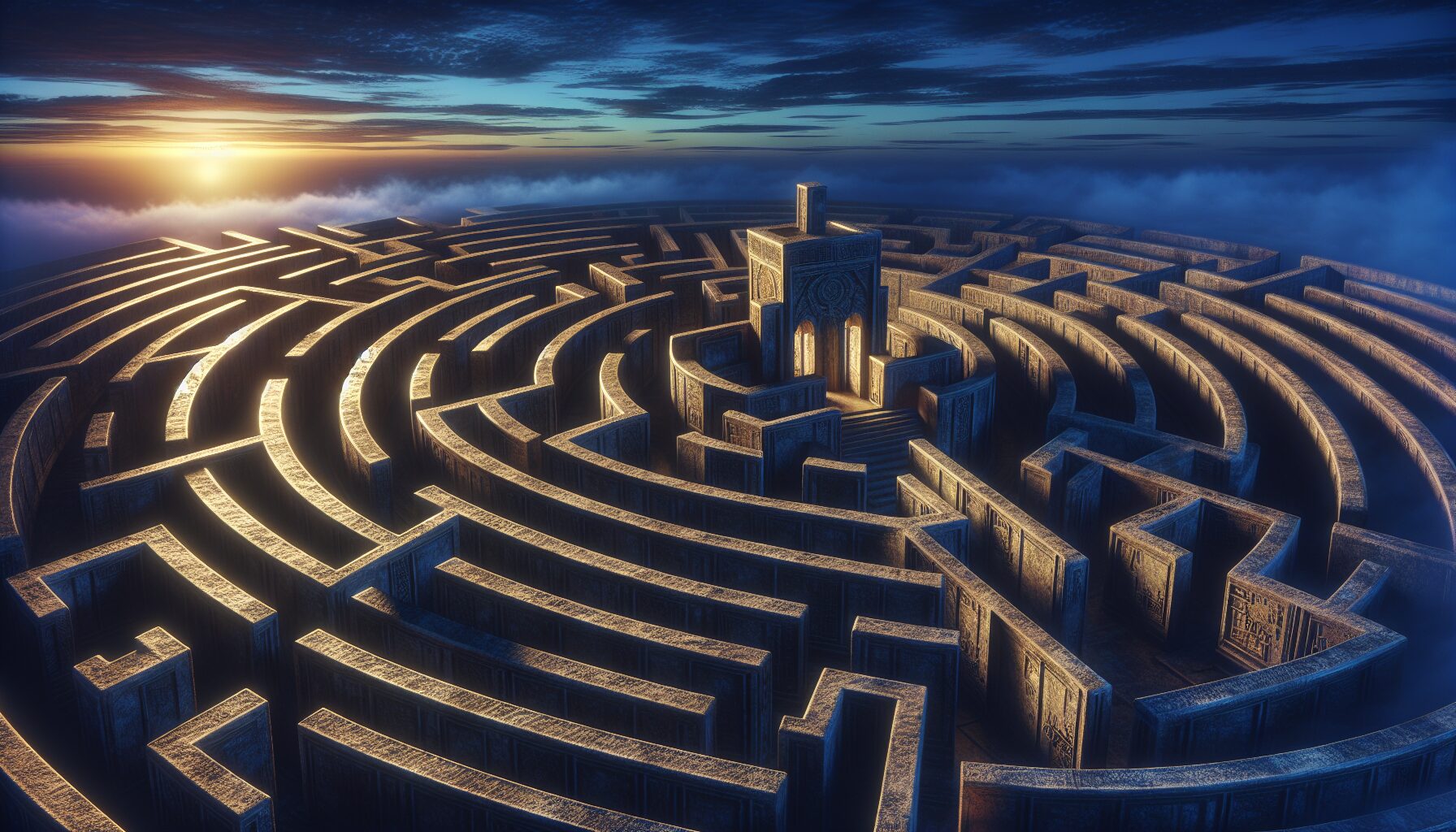The journey through our inner complexities can often feel like navigating a labyrinth at twilight—a maze of emotions, thoughts, and memories that intertwine and sometimes overwhelm. Embracing this journey is as much about self-discovery as it is about confronting the shadows that shape our identity. In this context, inner complexities refer to the tangled web of unconscious drives, unresolved conflicts, and the multi-layered nature of our psyches.
Understanding the Labyrinth
The concept of the labyrinth as a metaphor for the unconscious mind has roots in psychoanalytic theory. Carl Jung, the Swiss psychiatrist, suggested that our psyche is composed of different layers—the conscious, the personal unconscious, and the collective unconscious. He posited that exploring these layers involves confronting the Shadow Self, unearthing repressed emotions and recognizing unmet desires.
“Your vision will become clear only when you can look into your own heart. Who looks outside, dreams; who looks inside, awakes.” – Carl Jung
Jung’s exploration of the psyche acknowledges the contrariness of human nature, where light coexists with darkness. Navigating this internal landscape requires introspection, courage, and an openness to uncover deeper truths about oneself.
The Challenge of Emotional Complexity
At the heart of our internal labyrinth lies the complexity of human emotions. Feelings of joy, anger, sadness, and fear present themselves erratically, often conflicting and coexisting simultaneously. This emotional intricacy can be difficult to navigate without guidance or self-reflection.
- Recognizing Patterns: Identifying recurring emotional patterns or triggers is crucial. By tracing these back to their roots, we can better understand their influence on behavior and decision-making.
- Emotional Intelligence: Developing emotional intelligence helps in managing these complexities. It involves being aware of our emotions, regulating them, and recognizing the emotions in others.
Therapist Diane Barth, writing for Psychology Today, points out, “Emotional intelligence can be learned and developed, but it does take practice. We need to become aware of our feelings, understand where they come from, and learn how to express them in a constructive way.”
The Role of Introspection
Introspection serves as a vital tool in navigating our internal labyrinth. It means reflecting on one’s thoughts, feelings, and motives—digging beneath the surface to uncover what truly drives us. Here are some methods to aid this process:
- Journaling: Regularly writing about one’s thoughts and feelings can clarify the tangled aspects of our psyche and reveal patterns or issues that may otherwise remain hidden.
- Meditation and Mindfulness: These practices help in cultivating a sense of present-moment awareness, reducing the noise of the external world and allowing for a deeper connection with the inner self.
- Therapy: Engaging with a therapist can provide a safe space to explore one’s thoughts and emotions, offering guidance and insight that might be difficult to achieve alone.
There is an inherent vulnerability in introspection, where the promise of self-discovery is coupled with the risk of facing uncomfortable truths. However, it’s this process that facilitates healing and personal growth.
The Rewards of Embracing Complexity
(Reconciling the various parts of ourselves brings forth a multitude of rewards. By shedding light on our inner shadows, we develop a greater sense of self-awareness and authenticity. This contributes to healthier relationships, as understanding ourselves enables us to communicate more effectively and empathetically with others.
Furthermore, embracing the complexities of our nature encourages resilience. Understanding that our emotions and thoughts are valid parts of our existence fosters self-compassion and perseverance in the face of adversity.
“The privilege of a lifetime is to become who you truly are.” – Carl Jung
Conclusion
Navigating the twilight labyrinth of our inner complexities requires effort, patience, and an openness to the unknown. As we tread this path, we encounter parts of ourselves that hold immense power and potential for transformation. The journey through this labyrinth is not about reaching an endpoint but rather embracing each twist and turn as an integral element of our human experience.
By committing to this journey of self-exploration, we not only enhance our understanding of ourselves but also enrich our connection with the world around us. In the embracing of our inner complexities, we find the strength to illuminate the shadowy recesses of our being and walk confidently through the twilight.

Comments